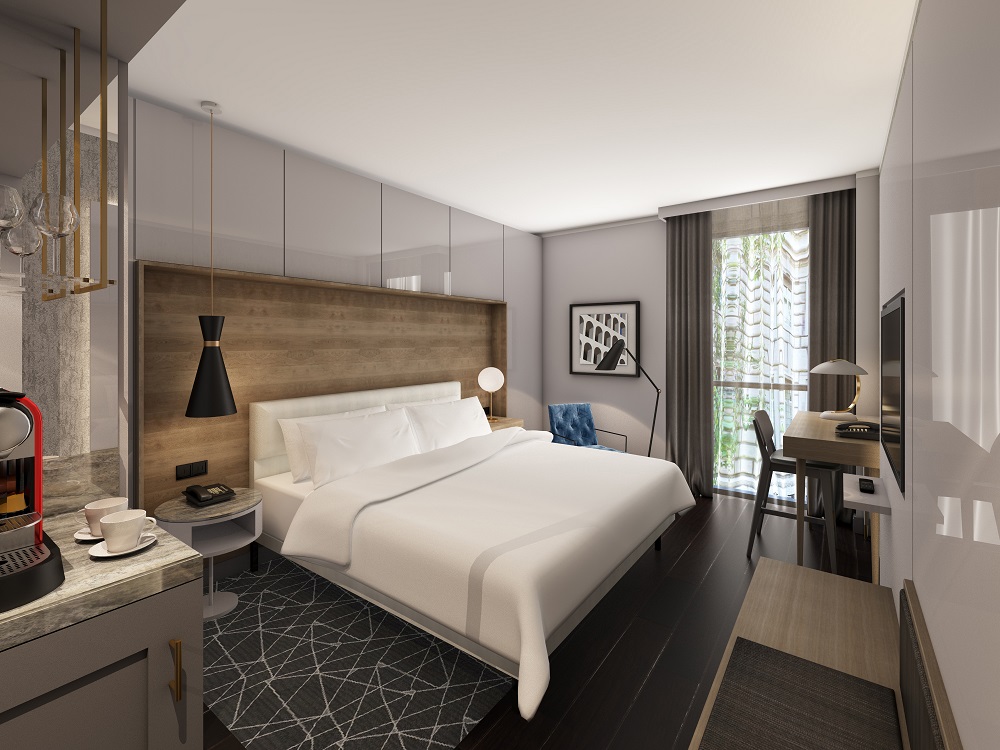Last week, Le Méridien Hotels & Resorts, part of Starwood Hotels & Resorts Worldwide, announced the investment of $300 million in the creation, renovation and conversion of its global portfolio.
Since joining Starwood in 2005, Le Méridien has increased its footprint both in North America and Asia Pacific by nearly 25 percent. During the past three years, the brand has renovated more than 50 percent of its European and Middle Eastern hotels.
The investment, said Brian Povinelli, global brand leader for Le Méridien Hotels & Resorts, was guided by the new brand positioning laid out in 2013. “It was not a focused effort to say we wanted to raise this much money or invest in the brand on this date,” he said. “It was a culmination of the new positioning resonating and showing a return for owners who had made the move, and others wanting to get involved.”
Much of the investment was divided between new-builds and renovations, with the former needing more money because “a renovation dollar can stretch over more hotels,” Povinelli said. The smallest allotment of the $300 million went to conversions, he continued, because the bulk of the brand’s focus going forward is on new-build properties.
New-Builds
When considering sites for a new hotel—whether new-build or adaptive reuse—Povinelli said that the Le Méridien team considers three factors: the location, the partnership and the business opportunities within the overall market. “There are different opportunities based on those criteria,” he said. For example, the brand is slated to open a new hotel in Riyadh, Saudi Arabai, next year, and Povinelli said that the city does not have a lot of upper-upscale properties, creating an opportunity to gain a foothold and cater to a growing niche. “Brand positioning is a factor,” he said. “Do we think we can bring the brand to life in that destination?”

Selecting an existing building for an adaptive-reuse project presents another set of challenges, he said. “Can the structure accommodate the needs of a full-service hotel?” A big red flag for selecting a building, he said, is available space for service elevators. “You want service elevators in back-of-house so foodservice and housekeeping don’t share elevators with guests,” he said. Heating, ventilation and air conditioning demands present another challenge. The Le Méridien in Philadelphia was developed in an old YMCA building, and the structure required a “holistic gutting” and a rebuilding from the ground up before it could reopen as a hotel because the internal components would not meet the brand’s standards. An office building, on the other hand, will often have the infrastructure for an HVAC system that can be easily adapted for hotel use, making that sort of structure much more appealing.
The Pipeline and the Merger
By the end of 2016, Le Méridien will re-enter Italy with the debut of 240-room Le Méridien Visconti Rome, after the $20-million conversion and extensive renovation of the Visconti Palace Hotel. Looking ahead, Le Méridien Riyadh is scheduled to open in Saudi Arabia in 2017 and Le Méridien Batumi, Georgia, in 2018.
Stateside, the brand will open in Fort Lauderdale following a $30-million renovation and conversion. It will also debut in Denver as part of a dual-branded hotel development in the downtown district; and will premiere in Houston following the restoration of a landmarked building.
The Denver hotel, Povinelli said, will be “interesting” because it will share its building with an AC Hotel by Marriott. While the two hotels will operate independently, they will share loading docks and back-of-house facilities. “It’s one of the first joint Marriott [International]-Starwood projects,” Povinelli said, noting that the plans were already under way before the merger between the two companies was announced in November. “The original scenario would have been two brands from different companies. They would have been distinctly different teams and they wouldn’t have shared resources,” he said. “That’s more commonplace.”
The merger of the two companies, Povinelli said, should not create significant changes for Le Méridien. “Le Méridien has found its spot in the upper-upscale category,” he said, noting that the current plans for the merger do not include the creation of new brands. “What it does is give us more resources and more opportunities to grow more quickly, given the development engine Marriott has. It doesn’t create any brand confusion because it’s not creating anything new.” Potential guests shopping between Marriott and Starwood brands can have it all under one umbrella, he added.
In total, Le Méridien is set to open more than 30 hotels worldwide in the next four years.
Renovations
This September, Le Méridien Etoile in Paris will reopen after multimillion-dollar renovation led by London architecture firm Michaelis Boyd and French interior designer Jean-Philippe Nuel. The updates include improvements to the guestrooms and suites, the jazz club, all public spaces and a new meetings space.
This year, the lobbies of Le Méridien Vienna (Austria), and the Le Méridien Hamburg and Le Méridien Frankfurt in Germany will be transformed into Le Méridien Hubs, which reinterpret the brand’s lobbies as social gathering places.
Renovations are ongoing at hotels in Montreal and Philadelphia, and in Texas, Le Méridien Dallas, The Stoneleigh will complete an extensive guestroom renovation.
